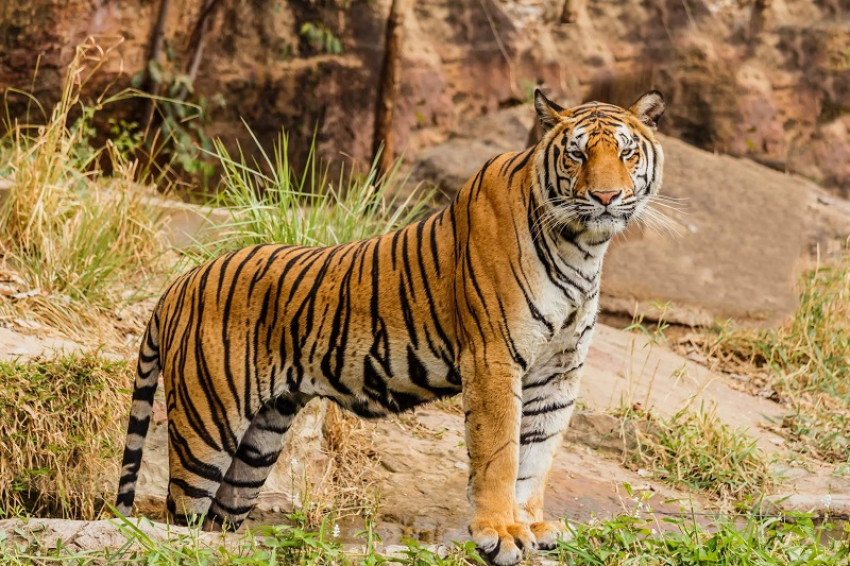
Nestled amidst the majestic Himalayan ranges, the pristine region of Kashmir is famous not only for its breathtaking landscapes and serene valleys but also for its abundant wildlife. Rich in a diverse range of flora and fauna, Kashmir is home to several wildlife sanctuaries that offer a glimpse of the rich biodiversity of the region. In this article, we will explore the five most prominent wildlife sanctuaries of Kashmir, along with options for Kashmir tour packages to enhance your wildlife experience.
Dachigam Wildlife Sanctuary:
Spread over an area of 141 sq km, Dachigam Wildlife Sanctuary is located just 22 km northeast of Srinagar, the capital of Jammu and Kashmir. Established in 1910, the sanctuary is famous for its majestic population of the critically endangered Hangul, also known as the Kashmir deer. Apart from the Hangul, the sanctuary is also home to other endangered species, including the Himalayan black bear, musk deer and leopard. The diverse terrain of the sanctuary, which includes steep slopes, deep valleys and high-altitude grasslands, provides an ideal habitat for these magnificent creatures.
Hemis National Park:
Located in the eastern part of Ladakh, Hemis National Park is one of the largest national parks in South Asia, covering an area of 4,400 sq km. The park exhibits the unique high-altitude ecosystem of the Trans-Himalayan region. It is home to several rare and endangered species, notably the snow leopard, which is the park's flagship species. Other animals found here include the Tibetan wolf, Eurasian brown bear, ibex and various species of migratory birds. Hemis National Park also holds cultural significance as it is home to the indigenous people of Ladakh, who have co-existed with wildlife for centuries.
Owara-Aru Wildlife Sanctuary:
Located in the picturesque Pahalgam region of Kashmir, Overa-Aru Wildlife Sanctuary is spread over an area of 32 sq km. It is characterized by its lush alpine meadows, dense coniferous forests and gurgling streams. The sanctuary is home to a variety of wildlife, including the endangered musk deer, Himalayan brown bear and leopard cat. It is also a paradise for bird lovers, with around 80 species of birds like the Monal pheasant, Western tragopan and Koklass pheasant making it their habitat. The serene environment and breathtaking views of the sanctuary make it an ideal place for nature lovers and trekkers.
Gulmarg Wildlife Sanctuary:
Located near the popular tourist destination of Gulmarg, Gulmarg Wildlife Sanctuary covers an area of 180 sq km. Known for its stunning grasslands, snow-clad peaks and dense forests, the sanctuary is a paradise for wildlife lovers. The sanctuary is home to a variety of animals, including the Himalayan black bear, red fox, musk deer and several species of birds. The bird population here includes the golden oriole, blue rock pigeon and Himalayan monal. Tourists can visit the sanctuary through various trekking trails and enjoy the mesmerizing beauty of its surroundings.
Jasrota Wildlife Sanctuary:
Located in Kathua district of Jammu and Kashmir, Jasrota Wildlife Sanctuary is spread over an area of 10.04 sq km. The sanctuary is situated on the banks of the Ujh River and is known for its diverse flora and fauna. The sanctuary is home to several species of mammals, including the Indian leopard, barking deer, wild boar and rhesus macaques. It is also a bird lovers' delight, with over 90 species of birds like the Indian peacock, white-throated kingfisher and Indian golden oriole seen here. The serene environment and natural beauty of the sanctuary make it a popular destination for nature lovers.
Travel Tips for Wildlife Experiences:
Plan your trip: Before visiting any wildlife sanctuary in Kashmir, you should plan your trip. Check the timings, entry fees, and any required permits required to visit the sanctuary. Also, consider the best time to visit based on wildlife sightings and weather conditions.
Hire a local guide: Hiring a local guide can greatly enhance your wildlife sanctuary experience. He has in-depth knowledge of the flora, fauna, and best places to see wildlife. They can also ensure your safety and provide valuable information about local culture and traditions.
Respect wildlife and their habitats: When visiting wildlife sanctuaries, it is important to respect wildlife and their natural habitats. Maintain a safe distance from animals, avoid feeding them and avoid littering. By being a responsible visitor, you contribute to the protection and conservation of these precious ecosystems.
Dress appropriately: The weather in Kashmir can be unpredictable, especially in high-altitude areas. It is recommended to dress in layers and wear appropriate clothing, including sturdy shoes, a hat, and sunglasses. Also, pack essentials like sunscreen, insect repellent and a first aid kit.
Follow the rules and regulations: Each wildlife sanctuary in Kashmir has its own rules and regulations to ensure the safety of visitors and the preservation of the ecosystem. Familiarize yourself with these rules and follow them strictly. This includes avoiding making loud noises, smoking, or carrying any prohibited items into the sanctuary.
Frequently Asked Question:
Q.1 What is the best time to visit Dachigam Wildlife Sanctuary?
Answer: The best time to visit Dachigam Wildlife Sanctuary is during April to October when the weather is pleasant and the wildlife is more active. It is advisable to avoid the winter months as heavy snowfall may restrict access to the sanctuary.
Q.2 Are there any accommodation options available near Hemis National Park?
Answer: Yes, there are some accommodation options available near Hemis National Park ranging from guesthouses to luxury resorts. However, to ensure availability, it is recommended to make prior reservations, especially during peak tourist season.
Q.3 Can I go trekking in Overa-Aru Wildlife Sanctuary?
Answer: Yes, trekking is allowed in Overa-Aru Wildlife Sanctuary. Several trekking routes pass through the sanctuary, offering breathtaking views of the surrounding peaks and grasslands. However, it is advisable to hire a local guide for a safe and enjoyable trekking experience.
Q.4 Is there any entry fee to visit Gulmarg Wildlife Sanctuary?
Answer: Yes, there is a nominal entry fee to visit Gulmarg Wildlife Sanctuary. The fee helps conserve and maintain the sanctuary. Visitors are required to pay a fee at the entrance before entering the sanctuary.
Q.5 Are there any restrictions on photography in Jasrota Wildlife Sanctuary?
Answer: Photography is allowed in Jasrota Wildlife Sanctuary. However, it is important to respect wildlife and their habitats when taking photographs. It is advisable to maintain a safe distance from animals and avoid using flash photography to avoid disturbing them






